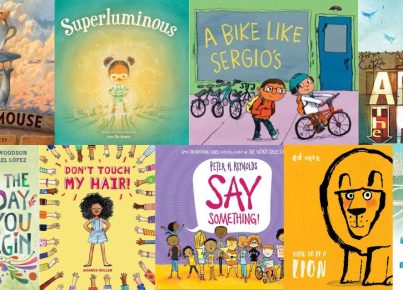Are you looking for adaptive learning apps, tools, and resources that you can use with your students? If so, we have you covered. Check out our list below. Let us know if there are any that we missed.
ALEKS– Assessment, and Learning in Knowledge Spaces (ALEKS) is a web-based AI learning and assessment system that uses adaptive questioning to determine the level of a student’s knowledge in a course. As a student works through a course, ALEKS periodically reassesses the student to ensure that topics learned are also retained.
Dreambox Learning– Help your child learn mathematics in an enabling environment. This app provides a nurturing environment using its intelligent adaptive learning technology to foster critical thinking relating to math. It also features an extensive math syllabus that leaves students with better knowledge and fluency in math.
FastBridge Learning– FastBridge Learning is a formative assessment system for teachers (FAST) designed to transform the way teachers identify and monitor a student’s progress to deliver faster and more effective results. It uses a combination of computer-adaptive testing
McGraw-Hill Connect – The tool is made to help students improve their results with the use of homework and learning management solutions that incorporate learning and adaptive tools. Some of the resources available to students include SmartBook Adaptive Learning—a platform that gives students adaptive mobile study resources to work with. Other resources include flexible and mobile course materials, grading and insights system, lecture caption, LMS integration, and accessibility.
MobyMax – MobyMax is a free web-based learning tool that uses artificial intelligence to create a complete K-8 differentiated and adaptive curriculum for Math, Language, Vocab, and Fact Fluency. With the help of machine learning algorithms, MobyMax provides personalized lessons for each student based on their individual needs. Machine learning helps MobyMax to pinpoint and fix learning gaps with adaptive, differentiated learning materials for all K-8 subjects. Students can learn at their own pace with lesson plans and practice sheets that are automatically generated for them. MobyMax goes one step further and includes contests, certificates, badges, games, and daily smiles to motivate students and keep them engaged. The multi-award-winning platform is the most widely adopted edtech platform in the U.S.
Newsela– Newsela provides a personalized approach to learning, using different assessments, annotated documents, and writing prompts throughout. This approach can be applied to different subjects because of their adaptive readability. Teachers can easily access learning analytics to assess the level of each student’s progression and task completion.
No Red Ink– This platform uses student self-assessments to construct sentences that pretest, practice, and evaluate students’ grammatical prowess and acquired learning. The app helps build stronger writers through interest-based curriculums, adaptive exercises, and actionable data. With the authentic assessment feature, students can rephrase sentences, modify and mark up texts, organize ideas into outlines, and manipulate multi-paragraph documents. The unlimited, adaptive practice feature personalizes instructions to meet each user’s needs and includes support for learners when they get confused. To make learning fun and interesting, lesson content is generated from topics that interest the user, such as popular celebrities, friends, and hobbies.
Redbird Language Arts & Writing – Redbird Language Arts & Writing provides students in grades 2-7 with a personalized language art and writing learning path by leveraging adaptive instruction and practice. This allows the platform to deliver precisely what each student needs to become a fluent writer and master communicator. Each grade level of material contains 9–10 units that focus on writing or reading skills. The architecture of each lesson was developed to provide students with instruction and practice on reading, parts of speech, paragraph analysis, sentence composition, and sentence structures. All lessons cover new concepts or provide practice with concepts that have already been introduced. In our highly competitive economy, employers seek candidates that have strong written communication skills. Although educators know that mastering language arts and writing is essential for future success in college and the workplace, a troubling number of students across K-12 struggle with acquiring these vital skills. Enter Redbird Language Arts & Writing. After demoing this product, I was impressed by its nuances and advanced features, which work together to help students develop superior written communication skills. I wholeheartedly recommend this platform to all classroom teachers, administrators, math coaches, etc., who are striving to increase their student’s language and writing skills. You won’t be disappointed.
Redbird Mathematics – Redbird Mathematics provides students in grades K-7 with a personalized mathematics learning path by leveraging adaptive instruction, gamification, and digital project-based learning. This allows the platform to deliver precisely what each student needs to develop math fluency and aptitude. Every unit of Redbird Mathematics is integrated with a STEM (Science, Technology, Engineering, Mathematics) theme. The student can select units, which are highlighted in red, and finish each unit with a digital project-based learning activity focused on the unit’s topic. It’s no secret that students regularly struggle with math. However, most education experts feel the issue is more about motivation and engagement than ability and aptitude. Enter Redbird Mathematics. After demoing this product, I was impressed by its nuances and advanced features, which work together to help students in grades 2-7 develop math fluency and conceptual understanding. Also, it can motivate students with math anxiety to face their fears and frustrations. As students reflect on their mistakes, they will start to see them as a necessary stop on the road to math fluency. I wholeheartedly recommend this platform to all classroom teachers, administrators, math coaches, etc., who are striving to increase their student’s math fluency and aptitude. You won’t be disappointed.
Reflex– This app offers a potent, adaptive, individualized solution to help a student increase their fluency in math facts, and it includes powerful reporting capability. It is easy to use for educators to use, and it helps them monitor each student’s performance to create the optimal experience for every child.
Sumdog – Aligned to the Common Core and key state standards, Sumdog provides K-8 learning in math, spelling, and grammar. With an adaptive learning engine, questions are targeted to everyone’s academic learning level providing automatic differentiation in the classroom. Questions are purposefully designed to blend new learning and review. Sumdog is full of engaging activities and games designed to keep students motivated through a focus on game-based learning. With a subscription, teachers have access to detailed reports providing information on progress, effort, skills, and growth against the standards for each student. Sumdog uses a positive reward system to help ensure continued student engagement. For correct answers, students earn gold coins which can be “spent” in Sumdog’s in-app store. There is also an optional pet reward program where each student has a virtual pet that learns one new trick for each new skill the student masters.
Trivie – Using adaptive learning and brain science, Trivie helps reduce the natural forgetting of information after any training event. Trivie’s adaptive learning platform measures and improves memory and retention so teams can reach their full potential. This app focuses on the how of learning, not just the what to help learners retain information longer and better.
Vantage Fusion – This app creates adaptive learning environments to foster meaningful interactions among students, parents, and teachers. It works with standard learning management systems to provide an instructional framework that guides the learner through the instructional content based on proven theories about how people learn effectively.
Vocabulary.com – A combination dictionary and adaptive learning game, Vocabulary.com, will help students master new words. The website doesn’t use flashcards or rote memorization. Instead, it exposes students to a variety of questions and activities to help them understand the meaning of the word. Vocabulary.com has over 500 ready-to-learn vocabulary lists for things like the SAT or TOEFL, or a user can enter their own list of words to master. Teachers can also automatically create a learning activity based on the text they will be teaching in class by simply pasting the text onto the Vocabulary.com website.
Wake the Rooster by Telling Time – To help an elderly rooster wake up in time to greet the dawn, Tiny the chicken buys an alarm clock. Children must help Tiny set the analog clock correctly to wake up the rooster. Adaptively designed, Wake the Rooster by Telling Time will progressively get more challenging. It includes fun animations as a reward for each time the alarm is set correctly.
Zapzapmath – Zapzapmath includes a suite of games for students in K-6 to complement a classroom mathematics curriculum. All games are tied to specific Common Core State Standards and encourage students to move beyond simply memorizing facts or formulas to thinking critically and analyzing math concepts. Teachers and parents can track student progress and learning outcomes from any device by accessing the learning analytics dashboard. All Zapzapmath games apply adaptive learning to ensure that students are appropriately challenged at their current mathematics level. To help them understand their learning, students are asked to take a pre- and post-assessment and reflect on their scores.



